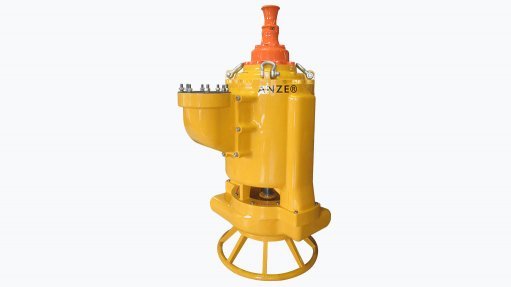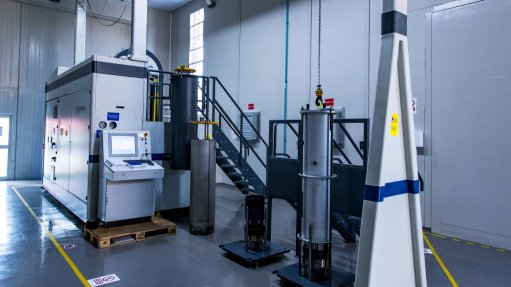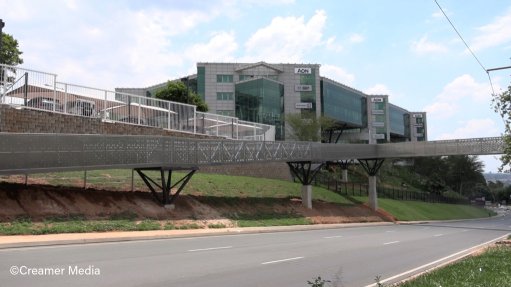As load shedding looms, UPS systems are key to keeping SA’s automotive industry up and running
This article has been supplied.
By Ben Selier, VP of Secure Power for Anglophone Africa at Schneider Electric
With the persistent threat of load shedding, South Africa’s automotive sector could face new disruptions, as production relies heavily on Operational Technology (OT) networks and Programmable Logic Controllers (PLCs), which are essential for automation and critical data generation.
During load shedding, PLCs and OT systems often fail, not because they are directly tied to the factory’s core manufacturing process, but because they are now an integral part of IT infrastructure. Traditionally, backup generators have been prioritised for large manufacturing plants to ensure continued operations. However, many fail to account for the fact that IT systems are no longer confined to data centres – they are now embedded within production environments.
When an IT system shuts down, the impact is far more complex than simply restarting machinery. Unlike a production line, where power restoration allows equipment to resume operation instantly, IT systems require rebooting, a process that can be time-consuming and disruptive.
Integrated with IT systems
Historically, PLCs were considered part of facility management, dedicated solely to running machinery. However, this is no longer the case, as PLCs are now deeply integrated with IT systems, relying on uninterrupted power and network connectivity. Uninterruptible Power Supplies (UPSs) have become critical in sustaining these systems, ensuring that IT infrastructure remains operational even during power fluctuations.
Industries such as automotive manufacturing are now highly data-driven, using IT systems to minimise operating costs (OPEX) and optimise production efficiency. Even minor power fluctuations can disrupt IT-dependent processes, leading to production delays and reduced output. IT hardware is significantly more sensitive to power instability than traditional manufacturing equipment, meaning even a brief dip in voltage can cripple essential IT functions, while physical production may continue unaffected.
South Africa faces inconsistent power quality, with fluctuations in frequency levels that can cause PLC failures despite ongoing manufacturing operations. While manufacturers, particularly in the automotive industry, are increasingly relying on generators and solar energy as backup power solutions, the way these systems interact with IT equipment presents a challenge.
Transitioning between power sources
Solar power, while effective for long-term energy generation, does not offer seamless power continuity for IT systems. The key issue lies in cutover times which is the transition between power sources.
Inverters, on the other hand, introduce a milliseconds-long power dip when switching power sources, which is enough to cause IT systems, including PLCs, to shut down and require a full reboot. This disruption impacts efficiency, particularly in industries where data-driven automation is crucial.
This is where UPS systems play a crucial role, not just in providing backup power but stabilising electrical input and preventing sudden disruptions that can impact production continuity. UPSs provide a zero-cutover solution, meaning there is no disruption when switching between backup and main power. This ensures consistent uptime for IT systems, preventing reboots and operational delays.
Effective power backup in manufacturing is not just about having a UPS but about matching the right system to the right environment. Not all UPS solutions are built the same, and their suitability depends on the specific operational conditions.
Proper adaptation required
For instance, a standard UPS designed for controlled environments, where air conditioning and filtration systems are in place, cannot simply be placed in the middle of an industrial plant without proper adaptation. Industrial UPS systems are designed to withstand harsher conditions, but still require regular filter maintenance to remain effective.
Choosing the right backup system requires a deep understanding of the PLCs in use, as not all PLCs are equally sensitive to power fluctuations. In some cases, an inverter may be a viable and cost-effective option, particularly for less sensitive PLCs that can tolerate brief cutover times. However, for more critical IT-dependent PLCs, a UPS is essential to maintain continuous uptime, ensuring seamless power transitions without the momentary dip that occurs with inverters.
Reliable power backup goes beyond just having a system; it must be tailored to the specific environment and IT-integrated PLCs. By collaborating with industry experts and choosing appropriate equipment, manufacturers can ensure operational continuity, reduce downtime and maintain efficiency in industrial processes.
Article Enquiry
Email Article
Save Article
Feedback
To advertise email advertising@creamermedia.co.za or click here
Comments
Press Office
Announcements
What's On
Subscribe to improve your user experience...
Option 1 (equivalent of R125 a month):
Receive a weekly copy of Creamer Media's Engineering News & Mining Weekly magazine
(print copy for those in South Africa and e-magazine for those outside of South Africa)
Receive daily email newsletters
Access to full search results
Access archive of magazine back copies
Access to Projects in Progress
Access to ONE Research Report of your choice in PDF format
Option 2 (equivalent of R375 a month):
All benefits from Option 1
PLUS
Access to Creamer Media's Research Channel Africa for ALL Research Reports, in PDF format, on various industrial and mining sectors
including Electricity; Water; Energy Transition; Hydrogen; Roads, Rail and Ports; Coal; Gold; Platinum; Battery Metals; etc.
Already a subscriber?
Forgotten your password?
Receive weekly copy of Creamer Media's Engineering News & Mining Weekly magazine (print copy for those in South Africa and e-magazine for those outside of South Africa)
➕
Recieve daily email newsletters
➕
Access to full search results
➕
Access archive of magazine back copies
➕
Access to Projects in Progress
➕
Access to ONE Research Report of your choice in PDF format
RESEARCH CHANNEL AFRICA
R4500 (equivalent of R375 a month)
SUBSCRIBEAll benefits from Option 1
➕
Access to Creamer Media's Research Channel Africa for ALL Research Reports on various industrial and mining sectors, in PDF format, including on:
Electricity
➕
Water
➕
Energy Transition
➕
Hydrogen
➕
Roads, Rail and Ports
➕
Coal
➕
Gold
➕
Platinum
➕
Battery Metals
➕
etc.
Receive all benefits from Option 1 or Option 2 delivered to numerous people at your company
➕
Multiple User names and Passwords for simultaneous log-ins
➕
Intranet integration access to all in your organisation



















